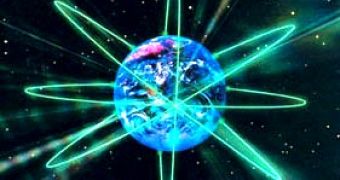One of the most important questions in nuclear physics today is the structure of heavy atomic nuclei, and although experimental nuclear physics has known significant advances in the last decades, the task of a detailed probing of atomic nuclei still relies significantly on advanced nuclear theory.
The problem is that using theory to make accurate predictions requires massive datasets that put a strain on even high-powered supercomputers.
One way of approaching this so-called many-body problem is to first construct mathematical functions that describe each particle, and then start multiplying these functions together to get some idea as to the underlying physics of the system, a computational herculean task when it comes to heavy elements, which have greater numbers of protons and neutrons that interact to produce astronomical computations.
For example, applying this approach to Nickel-56, the isotope with 28 protons and 28 neutrons effectively means solving an equation with 1 billion variables.
Researchers from Michigan State and Central Michigan universities have recently reported dramatic success in stripping away much of this stubborn complexity,, which slashes computational time from days or weeks to minutes or hours.
The key is correlation, the idea that some pairs of electrons are strongly linked and related. Correlations are what make it possible to rely on a modicum of data to make predictions about a complex system like a molecule, an atomic nucleus or even the nightly crowd at a restaurant.
To decide how to make the best use of a limited supply of tables, restaurant owners don't need to think of every potential customer as likely to interact with every other customer and move freely from table to table, when they can anticipate customers showing up in pairs or small groups and tending to stick together during any given evening.
The researchers first relied on the Michigan State University High Performance Computing Center for the weeks-long task of solving the billion-variable equation describing Nickel-56, in effect generating a yardstick by which to measure their more abbreviated model.
Next they compared the data to their newly found energy and wave functions and observed that coupled-cluster theory produced near identical results and the time spent crunching the numbers - on a standard laptop - was often measured in minutes or even seconds. "This gives us a way to start with particles, in this case nucleons, build an equation and then solve it - and to do so in a way that is computationally efficient, said Piotr Piecuch, one of the authors.

 14 DAY TRIAL //
14 DAY TRIAL //